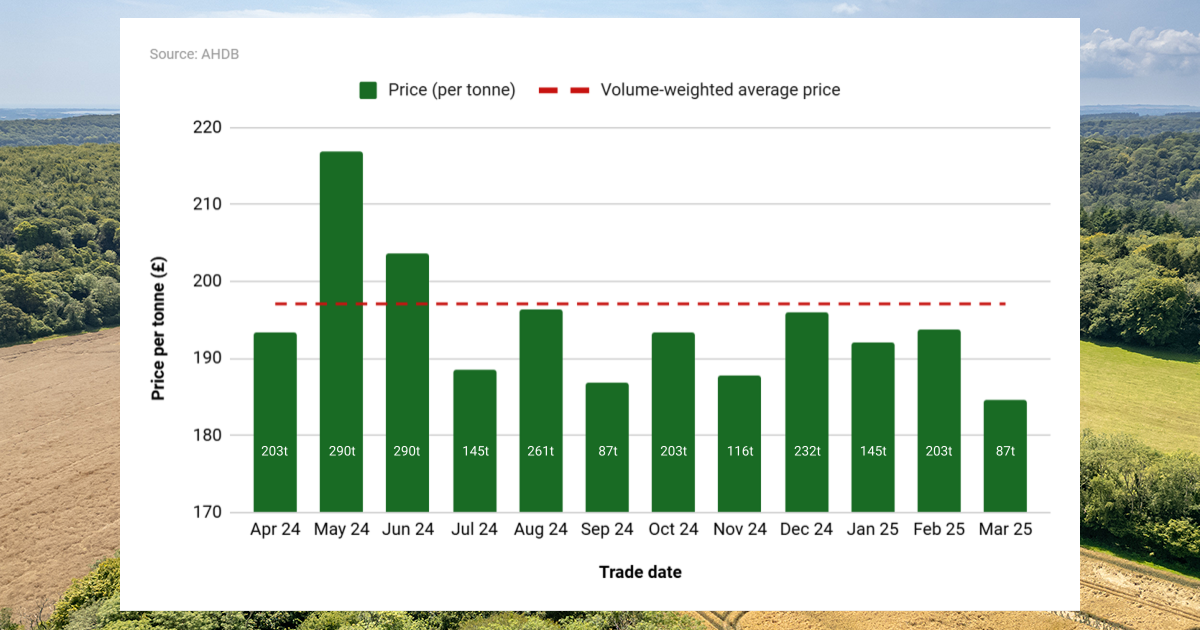Tired of chasing the market? Stick to your grain marketing plan
3-MINUTE READ
A clear marketing plan doesn’t guarantee you’ll always get the top price, but it does help you protect your bottom line. By putting the groundwork in before you’re under pressure, you take the emotion out of your selling decisions, and keep your business focused on long-term profitability.
It’s easy to get caught up in second-guessing the market. Should you sell now or hold on? Has the market got further to fall, or will prices rally another £10 per tonne?
This is where a good grain marketing plan helps you take the guesswork out of selling.
The key elements
At its heart, an effective grain marketing plan will include:
Your cost of production per crop, including all of your fixed and variable costs
Your breakeven price per crop, based on expected yields
Your storage capacity – what you can hold back and for how long – and any other logistical constraints
Your own records and insights from past years – what worked, what didn’t
Your risk management strategy – for example, selling little and often, or forward-selling a proportion of new crop to lock in prices and take advantage of carry
All of this should result in an expected selling schedule with clear targets for your average selling prices per crop. This places less emphasis on hitting top prices with each individual sale, and more on locking in a solid average over time.
That steadiness is what helps many arable farmers stay resilient through the ups and downs.
Example: selling feed wheat (harvest 2024)
The above example shows a farmer selling their 2024 feed wheat from April 2024 to March 2025, based on AHDB Corn Returns for the UK as a whole.
By selling every month and adjusting their tonnage in response to the market, the average selling price levels out at £197.07 per tonne, while leaving this farmer less exposed throughout the year to a sudden price fall.
For more on this strategy, see our article: Manage your risk by selling little and often.
Try our Grain Marketing Planner
Of course, there’s plenty of work to do on the farm without poring over spreadsheets and price charts. How can you find the time to build a detailed selling plan?
That’s why we’ve introduced our Grain Marketing Planner service. Simply tell us your cash flow and storage needs, your preferred movement months and your tonnage sales targets, and we’ll help you create a selling schedule for the year ahead.
The service will even list your crop for sale automatically at the scheduled times, although you can still adjust or skip any listings and, as always, there’s never an obligation to take any price you’re offered.
Update with fresh information
It’s important to keep in mind that most elements of your grain marketing plan are variable, so it’s worth revising the plan throughout the year as new data comes in.
For example, according to AHDB, red diesel prices have dropped considerably from 82.74p per litre in June 2024 to 71.80p per litre in June 2025. As this is probably less than you budgeted for, you can see how it impacts your cost of production.
Similarly, now harvest is underway, your estimated yields can be replaced by actual yields. The last AHDB Harvest Report indicated that the UK winter barley yield is 6.7 tonnes per hectare, in line with the five-year average. By contrast, the yield for winter oilseed rape is estimated at 3.76 t/ha, 21% higher than the five-year average.
Yields vary considerably, however, from farm to farm. As soon as you know your own yields, you can adjust your plan as this will affect your breakeven cost per tonne.
Take advantage of market opportunities
Of course, sticking to a plan doesn’t mean ignoring opportunity. If there’s a rally in the market or a local shortage pushes prices up, you want to be in a position to take advantage.
During harvest, rallies can often be driven by perceptions of global supply. As these rallies are often quite reactive to data, they can be sudden and short-lived, so you need to respond quickly to catch the value.
Our co-founder, arable farmer Andrew Huxham, noted in the The Farmers Guide Podcast:
“We did have some temporary rallies a few weeks ago based around unfavourable weather conditions around the globe, and that’s what farmers need to sell into – that’s what farmers need to capitalise on.”
So your marketing plan is always a framework rather than a rigid constraint, showing you where you can maximise value for your grain at any one time.
A good plan doesn’t pin you down – it gives you the confidence to act when it really counts.
Sell right through the year
When you’re flat-out at harvest, grain marketing may be the last thing on your mind, particularly when market conditions are tough.
But that’s where a good marketing plan really comes into its own, guiding your selling decisions even through your busiest times. Plus, with Hectare Trading you can check prices in your area and list your crop even when you’re out in the field.
There’s plenty you can’t control in farming: weather, input costs, global events. But your grain marketing plan is one thing you can control. Stick to it, adapt when the time is right, and you’ll give yourself the best chance of staying profitable year after year.
Want to see how Hectare Trading can transform your grain sales? Or are you keen to explore our Grain Marketing Planner? Contact our team today.
This article is for general information only and is not an instruction to trade. While we make every effort to ensure the accuracy of the content at the time of publication, Hectare Trading makes no guarantee regarding the data provided.

